Jeffery Edwin Freeman 1937-1965
Australian Speedcar racing champion
In March 1965, Jeff Freeman won the Australian Speedcar championship, two months before the sport claimed his life at the Westmead Speedway, Parramatta. Freeman’s short but spectacular career significantly raised the profile of the sport, and he was admired for his style on the track. Off the track he was an unpretentious champion, known for his accessibility to fans, good humour and generosity.
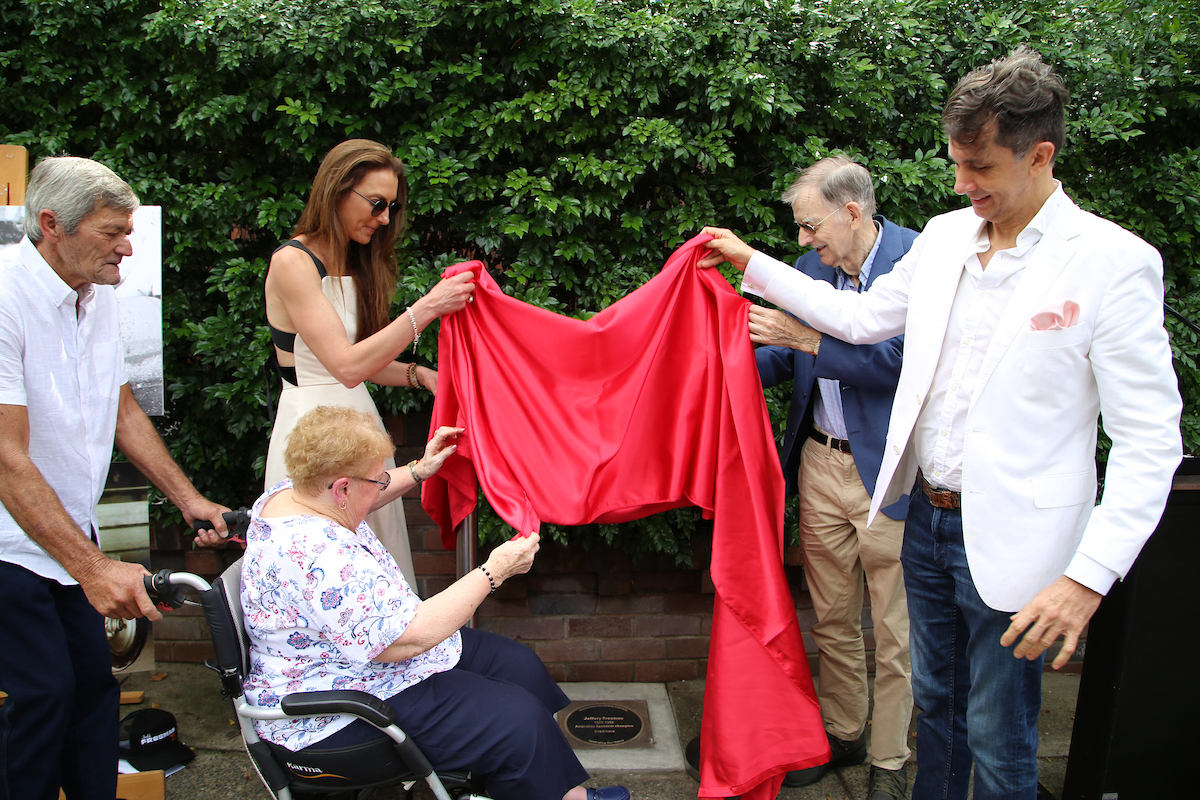
Plaque unveiling - Jeff Freeman - Family members with Mayor Cllr Susan Wynne, Ron Goold (plaque nominator) and Cllr Anthony Marano
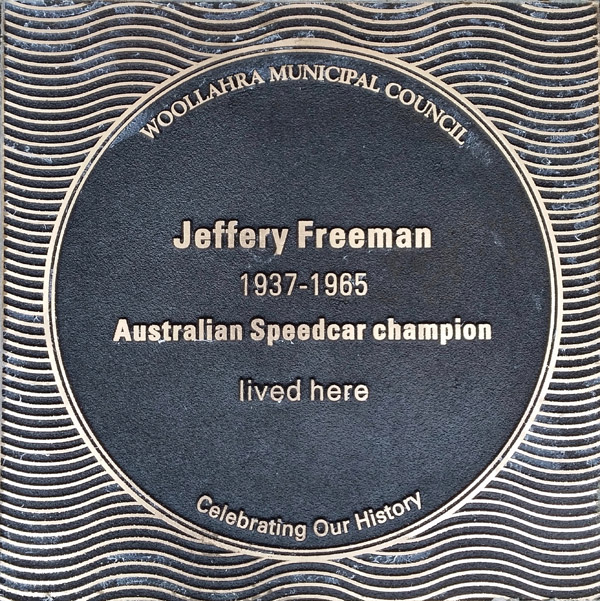
A plaque honouring Jeffery Freeman was unveiled on Friday 6 March, 2020 marking the month Freeman won the Australian Speedcar championship in 1965.
The plaque is located on the footpath outside 186 Glenmore Road, Paddington, the site of his former home.
Watch the plaque unveiling video
Gallery
29 December 1937- 9 May 1965
Australian Speedcar racing champion
In March 1965, Jeff Freeman attained Australian championship status as a speedcar driver, two months before the sport claimed his life at the Westmead Speedway, Parramatta. Freeman’s short but spectacular career significantly raised the profile of the sport, with his compelling style attracting a large following on the circuit, and his sportsmanship providing an ideal role model for young racing enthusiasts. Off the track, Freeman was admired as an unpretentious champion, known for his accessibility to fans, his good humour and his generosity, both to individuals and charitable causes.
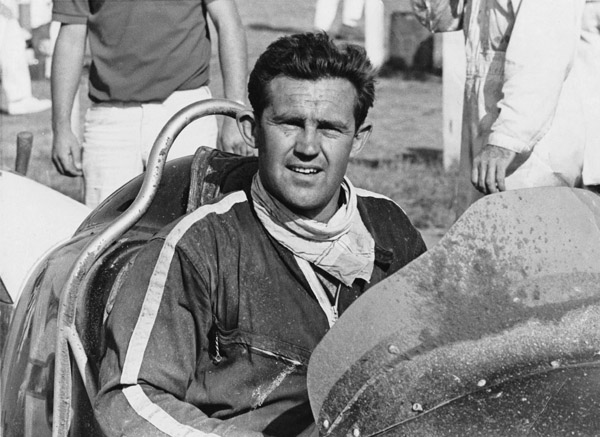
Jeff Freeman behind the wheel of the “Mackay Offy”, Westmead Speedway, 1965. Image courtesy of Dennis Newlyn, speedway historian and journalist.
Family Background, early life and education
Jeffery Edwin Freeman was born in Mudgee on 29 December 1937, the son of Mayfree Freeman. His mother’s family were long-time residents of the district; Mayfree had been born at nearby Rylstone,i and was settled in Mudgee with her family in the year before Jeff’s birth.ii Jeff grew up in a large extended family, made many friends and found plentiful outlets throughout his rural upbringing for his energy and high spirits. His childhood experiences saw him described in one memoir as “a real-life Tom Sawyer.”iii
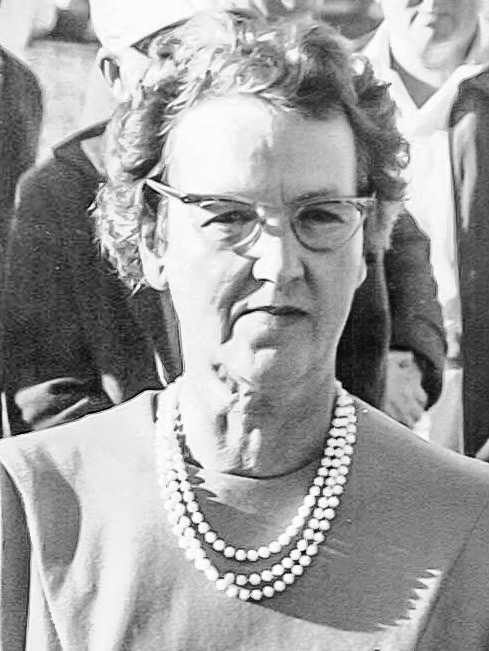
Jeffery Freemans mother, Mayfree. Image courtesy of Peter Carrall, private collection.
Freeman attended Mudgee Public and High schools, and was an enthusiastic participant in various sports and community life, playing junior rugby league, enjoying time as a boy scout and a member of the Mudgee Police Boys Club, where he learned to box.iv
In 1953, Mayfree Freeman married George Robson Jenkyn in Sydney.v Aged 16, Jeff moved to Sydney and, having trained as a motor mechanic, worked at The Sydney Service Station, near Taylor Square, and later for Qantas as part of the ground engineering staff. No 186 Glenmore Road, Paddington, became the family home, and Jeff’s residence throughout his racing career.
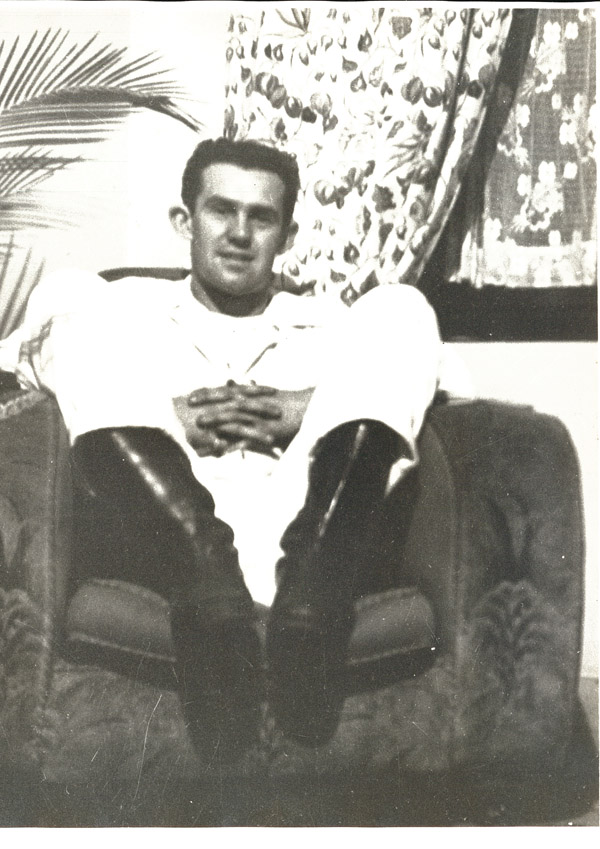
Jeffery Freeman at home, 186 Glenmore Road, Paddington. Image courtesy of Peter Carrall, private collection.
Introduction to speedway
Midget car racing – more commonly called ‘speedcar’ racing in Australia, and the sport in which Jeffery Freeman would make his name - involves small 4-cylinder cars designed specifically for racing, and with a very high power-to-weight ratio. The drivers compete on a short (1/2 mile) oval, dirt track. The sport originated in America in 1933, spreading quickly to Australia (1934) and New Zealand (1937). All three countries still hold national tours today, but the sport’s heyday was the 1950s and 1960s. It was during that era, in 1959, that Jeff Freeman became a competitor.
No 186 Glenmore Road was located within walking distance of one of Sydney’s major speedway venues – the racing track at the RAS Showground, Moore Park, today’s ‘Entertainment Quarter’. From 1947 until 1974, the Showground speedway was host to the race in which Freeman would establish his national credentials – the annual Australian Speedcar Grand Prix. Despite the proximity of his home to the speedway, Jeff Freeman became involved with speedway racing almost by chance, attending the event with a friend after having been ‘stood-up’ by a blind date.
It was typical of Freeman’s nature that his introduction to speedway was eased by his readiness to help anyone in difficulty. Smuggled into the pits at the Showground by his friend Johnny O’Connor, Jeff observed a crew experiencing a mechanical problem which he correctly diagnosed and solved. The owner, Alan Verdich, later gave Jeff an early break in his racing career.
In the seven years between his first experience at the wheel of a speedcar - in practice, at Westmead, in 1958 - and his death in 1965 as an acknowledged champion, Jeff Freeman’s star followed a swift ascendancy. He has been repeatedly noted as having an innate talent for driving, helped by an in-depth mechanical knowledge useful in any motor sport. Within a short time, Freeman had established a name for himself, and a following, and was eventually competing by invitation across a broad range of tracks and for a number speedcar syndicates.
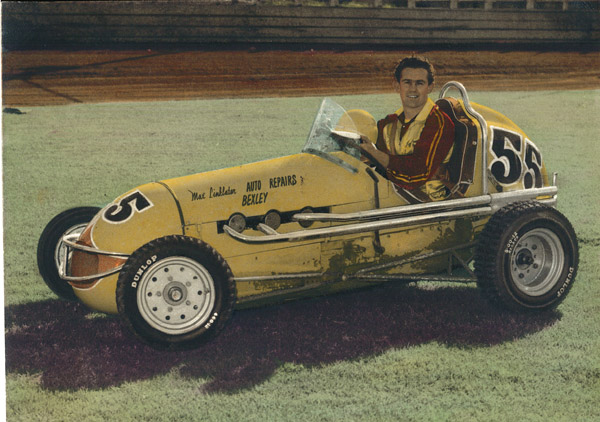
Jeff Freeman photographed in the No. 55 Max Linklater Holden c1961. Image courtesy of Peter Carrall, private collection.
Freeman broadened his experience beyond the local speedways by touring interstate and competing in New Zealand, and the energy which saw him described as a man who ‘lived 60 hours every day’vi carried him through a rapid succession of achievements. Nevertheless, he was remarkably level-headed, known for taking only calculated risks, and never losing sight of what was important in life.
Ultimately, Jeff caught the eye of the international Speedway fraternity, and at the time of his death was scheduled to race in 18 fixtures across America on the US Auto Club circuit beginning in August 1965. Freeman had already held his own on a number of occasions against American champion Bob Tattersall, whom he bettered on 6 March 1965 to win the Australian Speedcar Grand Prix. How Freeman would have performed on the American circuit will always remain unknown, but he had certainly risen quickly and convincingly in his own country. There is little doubt that much success still lay ahead for him, both in speedway and in life.
A record built in seven years
The results which he did achieved before his career was cut short, is spelt out in the entry created for Jeff Freeman on the Australian Speedway Hall of Fame website:
- A total of 34 career feature race wins in Australia and New Zealand;
- The 1965 Australian Grand Prix;
- The 1964 ¼ mile Australian Championship in Brisbane;
- The 6 lap track record at Windsor Speedway;
- The 3, 25, and 30 lap records at the Sydney Showground;
- match race credits over Americans Bob Tattersall and Jimmy Davies.
It is also noted at the same source that, “in a total of 107 career feature race starts at the Showground, Freeman won 19, placed second 15 times, with 14 thirds … a 45% podium strike rate.”vii
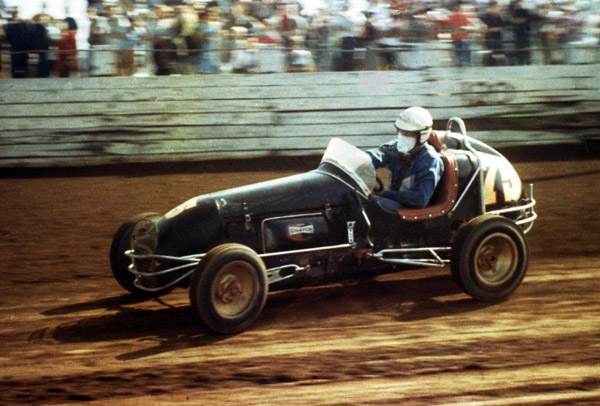
Jeff Freeman in action at Westmead in Don Mackay's American Offenhauser Speedcar. Image courtesy of Dennis Newlyn, speedway historian and journalist.
A National champion
In March 1965, two months before his death in May, Jeff Freeman cemented his reputation when he won the Australian Speedcar Grand Prix. Coming from behind to seize the trophy in a performance described as ‘brilliantviii, Freeman had now achieved a major win on a national scale.
"The 25,000 strong Showground crowd erupted as Freeman shot around the outside of Tattersall as the American tried to pass leader Barry Butterworth. Freeman went on to win the race and although Tattersall was victorious in the following weeks World Speedcar Championship, Sydney belonged to Freeman".
Australian Speedway Hall of Fame
Quite aside from his spectacular success in this single race, Jeff had also, by this time, established big leads in a number of National and seasonal point scores. The Australian Speedcar Grand Prix win completed a hat-trick of features for him won in close succession, and in the World Derby which eluded him, Freeman’s ascendancy was demonstrated by the 10-yard start he was obliged to concede to Tattersall.ix
An ambassador for his sport
Jeff Freeman brought an instinctive flamboyance to his role as a driver, and speedway fans and the sport itself - through his influence on crowd size - were the beneficiaries. Part of his showmanship was expressed though his superior car-handling skills, and he was prepared to confect dangerous moments, such as “fake spin-outs”, while remaining superbly in control, if required by promoters as a crowd-pleaser.x He was equally known for raising a roar of laughter from the fans through pre-race theatrics.
Away from the track, Freeman was an inveterate player of elaborate practical jokes, and a happy participant in the ham antics of speedway cabarets and benefits. He was also a good natured recipient of reciprocal jibes and pranks, such as when friends upped his bid at a charity wine auction, and he uncomplainingly paid the sum offered without his knowledge.
But there was also a serious side to his character. Peter Carrall, the young neighbour who was gradually absorbed into the Freeman household as family, recalls the strong values Jeff held. Respect for everyone, and equally, was one of the standards Jeff impressed upon Peter, and practiced himself. This quality, and his natural kindness, was also remembered by others:
“An admirable side of Jeff’s personality was his love of the young, old and unfortunate. If a youngster wrote to him requesting an autograph, Jeff would buy and post an autographed photo. He would go out of his way to talk on his hands to several deaf and dumb chaps who were very keen admirers, after taking the trouble to learn this art so that he could converse with them"
Australian & overseas speedway news (vol. 3, No 14 23.V.1965 p. 5.)
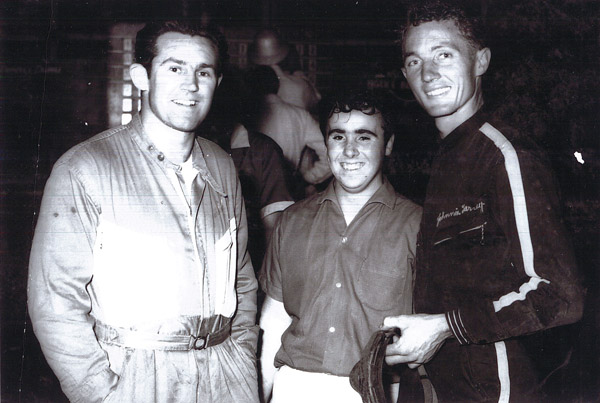
Jeff Freeman (left), close friend Peter Carrall (centre) and team mate Johnnie Harvey (right). Image courtesy of Peter Carrall, private collection.
Known for his fairness among competitors, Jeff put the standing of the sport above his own. When he suffered a wrongful suspension in 1964, he refused to publicly comment or to fight it, despite offers from speedway devotees to intervene on his behalf. He waited patiently to be cleared by the national regulators as they examined the evidence in their own time, before resuming a career which ended without blemish.
Death at the wheel
"I think we now know that Jeff Freeman was never meant to die in bed, grey of hair and tired of limb, but the way he would have chosen himself – on the dirt circuit at the wheel of a fast car."
Australian & overseas speedway news (vol. 3, No 14 23.V.1965 Editorial, p. 3.
Jeffery Freeman’s last race took place at the Westmead Speedway at Parramatta on 9 May 1965, where he was scheduled to appear in the ‘feature,’ a 15-lap event. The Westmead Speedway was located at the Parramatta Showground, encircling what was the main arena. This speedway had opened in 1930, and would close in 1969 after another fatality. The site is occupied today by part of the Westmead Hospital complex, which opened in 1978.
One week before, on 2 May and on this same track, Jeff Freeman had resoundingly owned the 15-lap Speedcar Feature, the last race he was destined to complete. And as one of speedway’s major venues, Westmead had seen Freeman compete many times.
On 9 May 1965, however, the dirt track was ‘heavy’, following rain for two days before. Freeman was overtaking two other drivers in the ninth lap, when he inadvertently steered into a ridge of dirt, which threw him off course. Freeman was killed instantly when his car first collided with the fence - part of which inflicted the fatal blow to his head - and then somersaulted multiple times. He was taken to Parramatta Hospital, but this was a vain precaution.
"It was all over in a few seconds and it was unbelievable. Shocked owners, drivers, officials and friends openly broke down, some were unable to believe their eyes for hours afterwards, while a hush fell over the entire arena. The event was immediately declared, with Sid Reed, Len Brock and Wal Brooker the unhappy place getters in a race they wish had never been held".
Australian & overseas speedway news (vol. 3, No 14 23.V.1965 p. 1.)
The loss of Jeff Freeman was met by a general outpouring of grief from the sport and its fans. The church was unable to accommodate mourners at the funeral service held at St David’s Arncliffe, and the procession to Woronora crematorium which followed, led by a police escort, stretched for over three miles, with police stationed at major intersections and crowds paying respects along the route. Silence was observed in his honour before events held at speedways across Sydney, and at other sporting venues such as Paddington’s Sydney stadium.
The speedway publication for which Freeman had written a regular column, Australian & overseas speedway news,devoted all but two of the 16 pages in its issue for 23 May 1965 to tributes and biographical commentary of the man it hailed as the sport’s ‘Champion of champions’ – the front page headlined ‘A Great era is over’.
Read the 23 May 1965 edition here: Australian & Overseas Speedway news Vol 3, No. 14, 23 May 1965(PDF, 5MB)
Coverage was not limited to speedway journalism, however, and Peter Carrall recalls how Mayfree Freeman and Jeff’s family could not escape their personal tragedy, which was front page news on Sydney dailies and a lead item on television and radio bulletins. It is an account confirmed by the entry for Freeman at the Australian Speedway Hall of Fame.
Acknowledging the loss of his mother and family, Speedway News paid tribute:
"Mayfree is indeed an example to us all as this wonderfully strong woman has borne her tragic loss with exceptional strength and courage. She is a woman in millions just as her son was a man in millions"
.Australian & overseas speedway news (vol. 3, No 14 23.V.1965 p. 3.)
As for Mayfree herself, she is quoted as having remarked:
"If Jeff were alive now he would probably walk in here and give us all a good kick up the rump for being so darn miserable".
Australian Speedway Hall of Fame.
The irony that Jeff had died on Mothers’ Day was lost on no one. Mayfree Freeman outlived her son by all but thirty years. After her death, on 22 March 1995, matching plaques were installed by her family, to mother and son, at the Mudgee Lawn cemetery,xi observing that the two were ‘together at last.’
In recognition of his importance to motor sports in this country, Jeffery Freeman was inducted in 2008 into the Australian Speedway Hall of Fame which includes Sir Jack Brabham and high-profile enthusiast Kym Bonython among its number.
Legacy
Jeff Freeman was a highly skilled competitor in his chosen sport. His performances drew large crowds, which raised the profile of speedcar racing in Australia. Freeman rapidly achieved heroic status among fans of the speedway, and his conduct both in the racing arena and beyond made him a highly popular figure, well-remembered by the speedcar fraternity over 50 years after his death, and an inspiration for many.
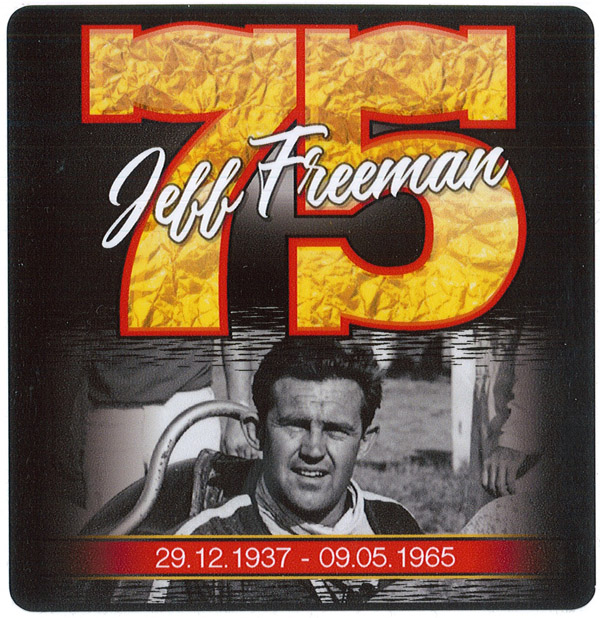
Jeff Freeman - sticker created for the event by B&B Graphics.
Newlyn, Dennis “Mothers’ Day tragedy cut short a brilliant racing career” Daily Telegraph 9.5.2015
Australian & overseas speedway news (vol. 3, No 14 23.V.1965) [This issue was a tribute to Jeff Freeman.]
Australian Speedway Hall of Fame
Footnotes
i NSW BDM online index ref: 11290/1914. Mayfree had been born in 1914, the daughter of Thomas and Margaret Freeman.
ii In 1936, Mayfree was living with her mother Margaret in Court Street Mudgee according to electoral rolls or the State division of Gwydir.
iii Australian & overseas speedway news (vol. 3, No 14 23.V.1965) p. 4
iv Op.cit.
v NSW BDM online index ref 294/1953
vi Australian & overseas speedway news (vol. 3, No 14 23.V.1965) p. 4
viiAustralian Speedway Hall of Fame
viii Australian & overseas speedway news (vol. 3, No 14 23.V.1965) pp. 8-9
ix Australian & overseas speedway news (vol. 3, No 14 23.V.1965) p. 8
x Op.cit
xi Mayfree Freeman-Jenkyn, 1914-1995, Mudgee Lawn Cemetery, Plot Lwn B11,
New plaques are added based on nominations from the community, which are then assessed against selection criteria and researched by a Local History Librarian.
Find out more and nominate a person or event for a plaque.